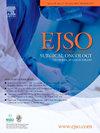主要唾液腺癌的淋巴结状态:一种新的N分类的外部验证
IF 3.5
2区 医学
Q2 ONCOLOGY
引用次数: 0
摘要
在处理MSGC时,节点状态被认为是一个重要的预测因素。由于目前的TNM n -分类不能准确地对患者进行分层,因此提倡采用替代的淋巴结分期系统。本课题组此前根据转移淋巴结数量、转移淋巴结最大直径以及这两个参数的结合,提出了3种新的n -分类模型。通过一个新的多中心队列的外部验证,本研究旨在确认先前提出的模型优于第8个TNM,并评估哪个模型最可靠。材料与方法将3种新型n -分类系统应用于验证数据集。使用Fisher检验、卡方检验和Mann-Whitney检验评估主要数据集和验证数据集之间观察到的差异的显著性。肿瘤预后为总生存期(OS)和无复发生存期(RFS)。通过Kaplan-Meier法估计生存率。分别通过log-rank检验和Cox比例风险模型估计各n分类系统水平对生存率和风险比(hr)差异的显著性。结果考虑转移淋巴结数量的n -分级是最佳的预后分层,pN0、pN1 (NM数、lt数;4)和pN2 (NM数≥4)。该模型优于目前的TNM n类。结论在MSGC患者中,受累淋巴结总数是最重要的预后因素,与目前的TNM分类相比,提供了更准确的风险分层。本文章由计算机程序翻译,如有差异,请以英文原文为准。
Nodal status in major salivary gland cancer: External validation of a novel N- classification
Background
Nodal status has been considered an important prognosticator when dealing with MSGC. Since current TNM N-categories do not accurately stratify patients, alternative nodal staging systems have been advocated. Our group has previously proposed 3 novel N-classification models according to number of metastatic nodes, largest diameter of metastatic nodes, and a combination of these two parameters.
Aim of the study
Through an external validation in a new multicentric cohort, the present study aims to confirm the superiority of the previously proposed models over the 8th TNM and to assess which of the models is the most reliable.
Material and methods
The 3 novel N-classification systems were applied to the validation dataset. Significance of observed differences between primary and validation datasets was assessed using Fisher, chi-squared, and Mann-Whitney tests. Oncological outcomes were overall survival (OS) and recurrence free survival (RFS). Survival estimates were obtained through Kaplan-Meier method. The significance of observed differences in survival and hazard ratios (HRs) according to the levels of each N-classification system was estimated through log-rank test and Cox proportional hazard model, respectively.
Results
N-classification considering number of metastatic nodes showed the best prognostic stratification, with significant differences among pN0, pN1 (number of NM < 4), and pN2 (number of NM ≥ 4) for both survival outcomes. This model confirmed to be superior to current TNM N-categories.
Conclusions
In patients with MSGC, overall number of involved lymph nodes is the most important prognostic factor, providing a more accurate risk stratification than that obtained using the current TNM classification.
求助全文
通过发布文献求助,成功后即可免费获取论文全文。
去求助
来源期刊

Ejso
医学-外科
CiteScore
6.40
自引率
2.60%
发文量
1148
审稿时长
41 days
期刊介绍:
JSO - European Journal of Surgical Oncology ("the Journal of Cancer Surgery") is the Official Journal of the European Society of Surgical Oncology and BASO ~ the Association for Cancer Surgery.
The EJSO aims to advance surgical oncology research and practice through the publication of original research articles, review articles, editorials, debates and correspondence.
 求助内容:
求助内容: 应助结果提醒方式:
应助结果提醒方式:


